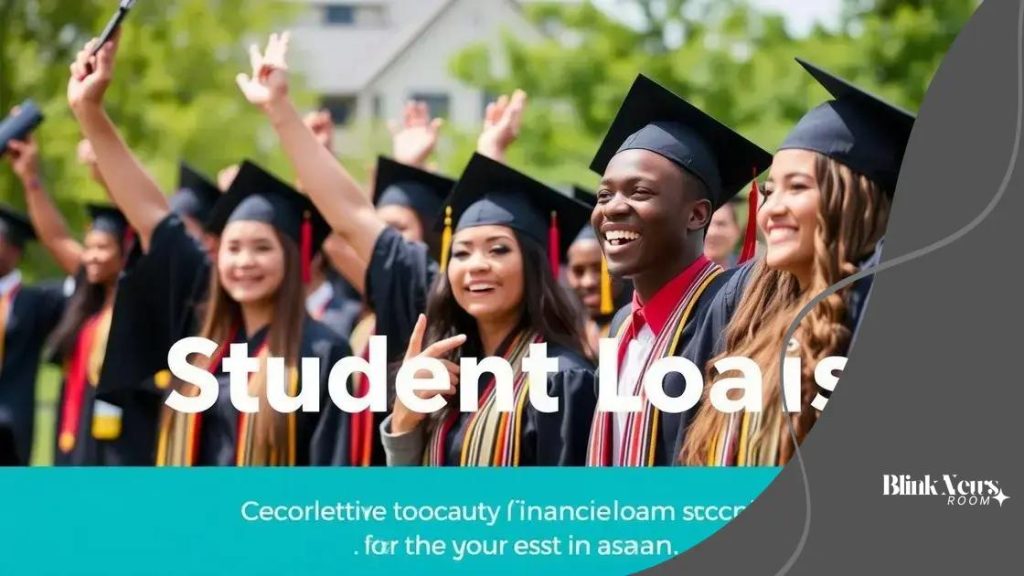Student loan forgiveness programs: a guide to relief

Anúncios
Student loan forgiveness programs provide relief to borrowers by eliminating some or all of their student debt, often requiring specific eligibility criteria, application processes, and employment conditions to qualify.
Student loan forgiveness programs are vital resources for those struggling with educational debt. Have you ever wondered how these programs can ease your financial burden? Let’s explore the various options and what they mean for you.
Anúncios
Understanding student loan forgiveness options
Understanding the various student loan forgiveness options can be a game-changer for borrowers. Many individuals believe repayment is their only option, but there are actually pathways to relief available.
Types of Forgiveness Programs
There are several types of programs that can help forgive your loans. Here are the most common:
- Public Service Loan Forgiveness (PSLF): Designed for those who work in qualifying public service jobs.
- Teacher Loan Forgiveness: Offers forgiveness to teachers who work in low-income schools.
- Income-Driven Repayment Forgiveness: After 20 or 25 years of qualifying payments on income-driven plans.
Each program has its rules and eligibility requirements, making it essential to understand your options thoroughly.
Anúncios
How to Determine Your Eligibility
To find out if you qualify for any of these programs, start by reviewing your loan type. Not all loans are eligible for forgiveness. For instance, federal loans like Direct Loans are generally included, while private loans are not.
You will also need to ensure you meet other criteria, such as employment in a qualifying role and consistent payments. Gathering the proper documentation is vital. This means checking your employment history and payment records.
Another critical step is keeping an eye on deadlines. Many programs require applications to be submitted within a specific timeframe. Staying informed will make a big difference in your chances of receiving forgiveness.
Be aware that misunderstanding the requirements can lead to disqualification. Always consult official resources or a financial advisor if you are uncertain.
Understanding student loan forgiveness options is crucial for any borrower struggling with repayments. With the right information and resources, you can navigate through the forgiveness maze and possibly lighten your financial burden.
Eligibility criteria for forgiveness programs
Eligibility criteria for forgiveness programs can vary significantly between different options available to borrowers. Understanding these requirements is crucial to accessing potential relief.
Common Eligibility Requirements
Most forgiveness programs share basic eligibility requirements. Here are key points to consider:
- Loan Type: Ensure you have a qualifying federal student loan, such as Direct Loans.
- Payment History: Consistent, on-time payments are generally required.
- Employment Status: Many programs require you to work in a qualifying job or sector.
These factors often determine whether you can take advantage of forgiveness opportunities.
Specific Program Criteria
Different programs have unique specifications that influence eligibility. For example, the Public Service Loan Forgiveness program requires borrowers to make 120 qualifying payments while employed in public service.
On the other hand, the Teacher Loan Forgiveness program mandates that teachers work in low-income schools for a set period. These specific requirements can impact a borrower’s ability to qualify. Therefore, it is essential to review the details of each program carefully.
Moreover, borrowers should be aware of any time limits or additional stipulations. For instance, those seeking Income-Driven Repayment Forgiveness need to follow the rules of their repayment plans for up to 20 or 25 years.
Navigating these eligibility criteria can feel overwhelming, but understanding the nuances can lead to successful applications. Always check for the most current information, as rules may change with different administrations or policies.
How to apply for student loan forgiveness

Applying for student loan forgiveness can seem daunting, but it’s a manageable process if you know the steps. The application procedure varies depending on the type of forgiveness program.
Gather Your Documents
Before beginning your application, collect important documents. This may include:
- Loan Information: Have details about your loans readily available, including loan type and balance.
- Employment Verification: Collect proof of your employment status, especially if applying for programs like Public Service Loan Forgiveness.
- Payment History: Know your payment history, including qualifying payments.
Having these documents organized can help streamline the process.
Filling Out the Application
The next step is completing your application. Depending on the program, this may involve filling out a specific form or applying online through the loan servicer’s website. Make sure to follow the instructions carefully, as skipping steps could delay your application.
For Public Service Loan Forgiveness, you will need to submit the Employment Certification Form annually. This ensures your employment is verified each year, keeping your eligibility intact.
It’s also important to double-check your application before submitting. Errors can lead to complications, so take your time to review all information.
Stay Informed About Your Application Status
After submitting your application, monitor its status. You can do this by contacting your loan servicer or checking online if they provide a portal for updates. Being proactive can help you catch any issues early.
If your application is approved, you will receive a notification detailing your forgiveness amount and the next steps. In case of a denial, you may be given reasons for the decision, along with information on how to appeal.
Applying for student loan forgiveness doesn’t have to be overwhelming. By staying organized, following the required steps, and keeping in contact with your servicer, you can navigate the application process successfully.
Impact on credit scores after forgiveness
The impact on your credit score after receiving student loan forgiveness is an important consideration for borrowers. Many people worry that forgiveness will negatively affect their credit, but the truth is more nuanced.
Understanding Credit Scores
Your credit score reflects your creditworthiness. It is affected by factors such as payment history, amounts owed, length of credit history, new credit, and types of credit used. When it comes to forgiveness, the most significant factor is how payment history is managed.
Forgiveness and Payment History
When loans are forgiven, the remaining balance is wiped out. This can lead to an immediate positive impact on your credit score, especially if it reduces your overall debt load. However, if you missed payments or were delinquent before forgiveness was granted, those negative entries can still linger on your credit report.
It’s important to keep in mind that forgiveness does not automatically remove negative payment history. You may still need to take steps to rebuild your score, such as making on-time payments on other accounts.
Post-Forgiveness Financial Management
After your loans are forgiven, focus on managing your finances wisely. This can include:
- Maintaining On-Time Payments: Continue to pay your other bills on time.
- Using Credit Wisely: Keep credit card balances low and avoid opening multiple new accounts at once.
- Check Your Credit Report: Regularly review your credit report to spot inaccuracies.
By taking these steps, you can ensure that your credit score reflects the positive changes in your financial situation after forgiveness.
The overall effect of student loan forgiveness on your credit score can vary, but with careful financial management, you can boost your credit health moving forward. Understanding the nuances of your credit report and actively working to maintain it will lead to better outcomes in the long run.
Common misconceptions about forgiveness
Common misconceptions about student loan forgiveness can lead to confusion and unnecessary stress. It’s vital to understand what is fact and what is myth concerning these programs.
Myth #1: Forgiveness is Automatic
Many borrowers believe that once they apply for forgiveness, their loans will be automatically forgiven. However, this is not true. You must meet specific criteria and complete the application process for forgiveness to be granted.
Myth #2: All Loans Qualify
Another misunderstanding is that all student loans qualify for forgiveness. In reality, only certain federal loans, like Direct Loans, are eligible for forgiveness programs. Most private loans do not qualify.
It’s important to check the type of loan you have to know your options.
Myth #3: You Can’t Qualify if You Have Defaulted
Some borrowers think that if they’ve defaulted on their loans, they cannot qualify for forgiveness. While defaulting can complicate matters, you can still regain eligibility through rehabilitation programs or by consolidating your loans.
Understanding these pathways can help borrowers get back on track.
Myth #4: All Forgiveness Programs are the Same
Many people assume that all forgiveness programs operate under the same rules. In fact, each program has unique eligibility criteria and requirements. Programs like Public Service Loan Forgiveness and Teacher Loan Forgiveness have specific conditions that must be fulfilled.
Knowing these differences can be key in navigating the application process effectively.
Myth #5: Forgiveness Is a New Concept
Some believe that loan forgiveness programs are recent developments. In reality, these programs have existed for many years, although awareness and resources surrounding them have expanded significantly.
Staying informed about long-established programs is crucial for borrowers seeking relief.
Understanding these common misconceptions about student loan forgiveness is essential for making informed financial decisions. By knowing the facts, you can avoid pitfalls and take advantage of the opportunities available to you.
In summary, understanding student loan forgiveness is essential for borrowers seeking relief from debt. By being informed about eligibility criteria, application processes, and common misconceptions, you can navigate the options available to you. Staying proactive in managing your financial health and knowing your rights can lead to a brighter financial future. Remember, pursuing forgiveness is not just a possibility; it’s an opportunity to regain control over your finances and move forward confidently.
FAQ – Frequently Asked Questions about Student Loan Forgiveness
What types of loans qualify for forgiveness programs?
Generally, federal student loans, such as Direct Loans, qualify for forgiveness. Most private loans do not.
How do I apply for student loan forgiveness?
You can apply by completing the required forms and providing necessary documentation to your loan servicer.
Will forgiveness affect my credit score?
Receiving forgiveness may improve your credit score by reducing your overall debt, but missed payments can still negatively impact it.
What are common misconceptions about loan forgiveness?
Common myths include the belief that forgiveness is automatic or that all loans qualify. It’s important to understand the criteria and process.